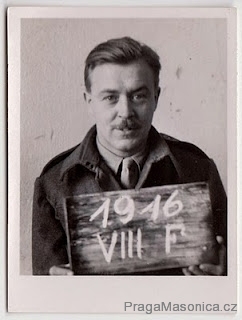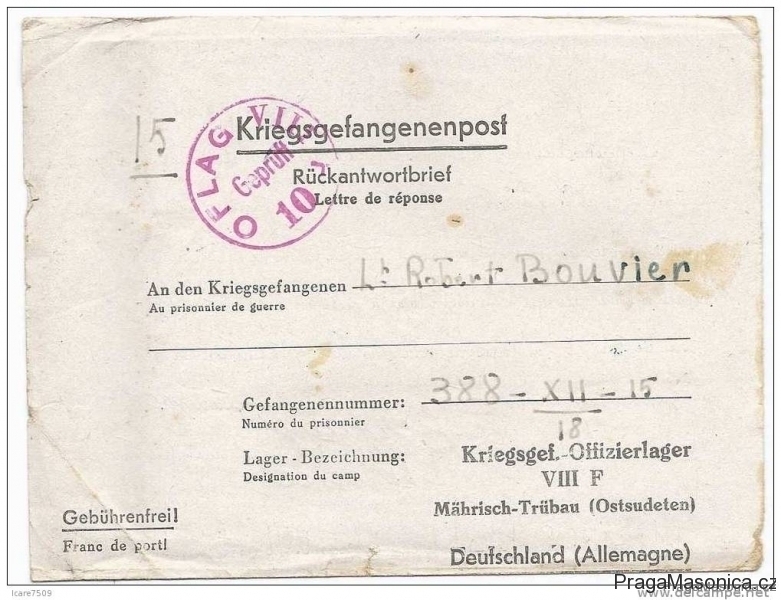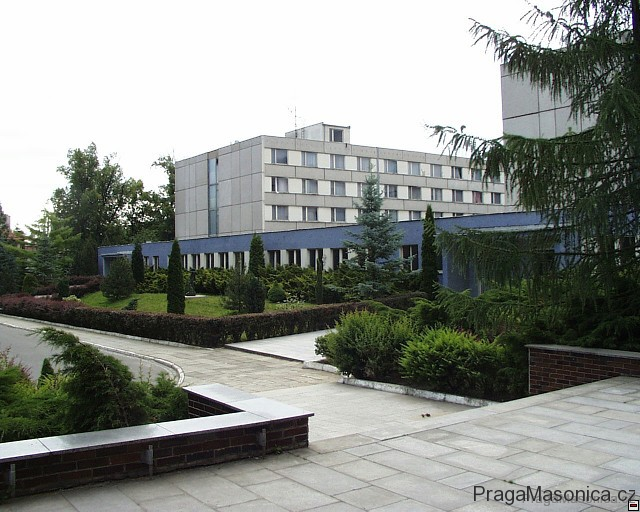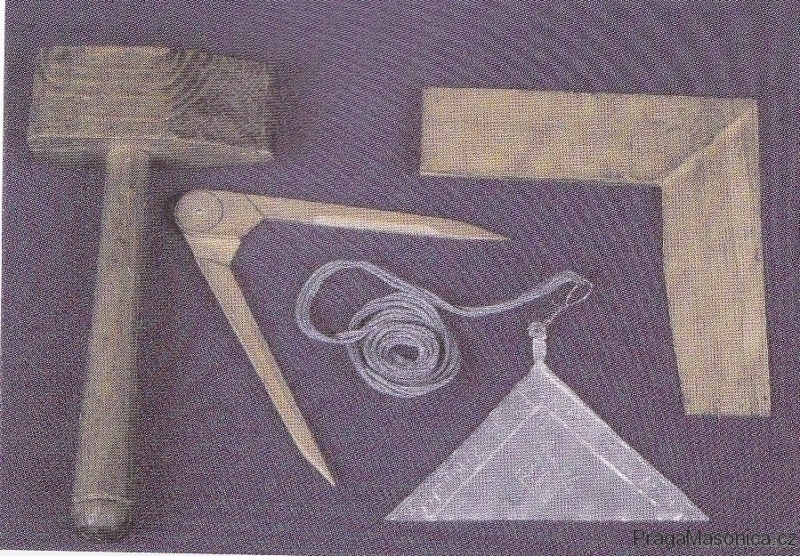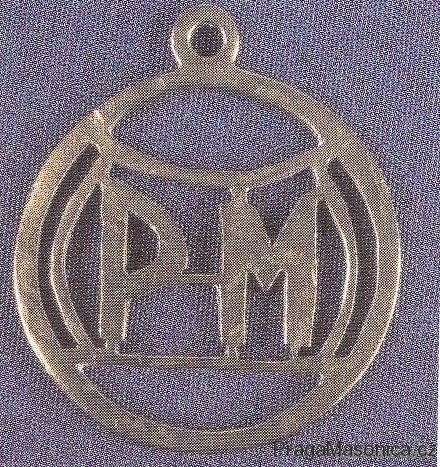Masonic work in Nazi-occupied Czechoslovakia?
It sound quite unlikely, but indeed, in 1944 there was masonic activity in the Moravian town Moravská Třebová (German: Mährisch Trübau), which is in the eastern part of today`s Czech Republic.
How to explain this?
Moravská Třebová (Mährisch Trübau) is today a town in the Svitavy District and lies in the Pardubice Region of the Czech Republic. It had before the war around 11.300 inhabitants. It was the largest German linguistic enclave within Bohemia and Moravia. Until the expulsion of the German speaking population in 1945-46 it was exclusively German.
After the Munich agreement in September 1939, when Germany, Italy, France and Britain agreed that Czechoslovakia has to surrender its German speaking border area (Sudeten) to Nazi-Germany, Moravská Třebová became part of the Third Reich. The town had a large campus with a boarding school used by children of military personnel in the period 1935-1939. When the town became part of Germany, the school was liquidated and the premises were used by the German army. Subsequently it was transformed to a camp with the name Oflag VIII F.
Oflag VIII-F was a World War II German POW camp for officers with two camp locations: the first was located in Wahlstatt, now Legnickie Pole in Silesia (Poland) and the second in Mährisch Trübau, in north-eastern Czech Republic.
The camp in Mährisch Trübau was opened in July 1942 and closed in July 1944.
In early 1943 there were 2 100 French officers and about 100 officers of the Yugoslav army. They were transferred from camps in Italy. They stayed there till the end of 1943 to be transferred again.
Late 1943, it accommodated 2500 British Commonwealth officers and 100 auxiliary forces (among them were Brits, Americans, Canadians, Greeks, Indians) taken prisoner by the Germans in the Greek islands after the capitulation of Italy. Others were captured during the Western Desert Campaign in North Africa in 1942. Originally held in Italian POW camps, they were transferred by the Germans after Italy’s capitulation. In July 1944, most of the prisoners were transferred to Oflag 79 near Braunschweig.
After the POW left, the facility in Mährisch Trübau was taken over by a branch of the German company Telefunken Fabrik, which produced electro components for the German aircraft industry and for the V1 and V2 rockets.
What interests us is the presence Freemasons among the British officers.
A valuable insight of the masonic activity in this camp has been given by Bro C B Selby-Boothroyd. He was captured, after a brief battle, in May, 1940, and found himself in a prisoner of war camp at Laufen and later in Eichstatt. In January, 1944, Selby-Boothroyd was transferred to Oflag VIIIF at Mährisch Trübau.
Some months after his arrival, having made a casual remark, he was questioned by his hearer, from whom he learned that some 40 brethren, transferred from an Italian camp, where they first met, were holding regular meetings. Selby-Boothroyd was accepted amongst them. At first these brethren had little more than the opening and closing ceremonies and the initiation, but a “lodge” or society of improvement was formed under the Preceptorship of a Bro Clifford Downing, one of the few Past Masters in the camp. It was called a society as a “blind”, to mislead the enemy, so that the term could mean a society for the improvement of anything. Bit by bit the ritual was put together, and by May they were able to work the three degrees more or less completely, as well as a shortened version of the lecture on the 2nd Tracing Board.
By this time Bro D P Iggulden (1) also reached the camp. Within a few hours of his arrival he was contacted by Downing and invited to attend the “lodge”, after, of course, a very thorough proving. The Senior Chaplain of the camp was a member of the Craft, and he allowed the brethren to meet in the camp Chapel under the guise of attending theological lectures. It was a common practice at Masonic gatherings in camps for the Master, or someone else, to be ready to lecture on some pre-arranged subject at a moment’s notice if an alarm was sounded.
After a while they met in a small room that could only be accessed through another room where Indian prisoners rehearsed their `noisy and incomprehensible dramas’.
Minutes of all meetings were kept and brought back to the United Kingdom after the war but they were often so cryptic, obviously to confuse the guards, that often the secretaries had difficulty deciphering their own work after the war.
It is astonishing to realize, that in 1944, in the darkest hours of WWII, in a Nazi controlled town with pro-Nazi inhabitants, the British POW in a nearby camp, held masonic gatherings and kept masonic values of universal brotherhood, love and truth alive.
Et lux in tenebris lucet et tenebrae eam non conprehenderunt.
© Jacob Sadilek
Notes:
(1) Sir Douglas Percy Iggulden. Major; Hon. Lt.-Col. President Kent rent assessment panel since 1972; chief valuer board of inland revenue 1966-71. Commissioned in the 4th B.N. the Buffs 1924; mobilized 1939; France (Dispatches). 1939-40; Malta 1940-43, comd. 4th Buffs. 1942 POW Leros. Demobilized 1945. Commander Royal Order of the Dannebrog, Denmark.
References:
HEWITT, A.R. Craftsmen in Captivity – Masonic Activities of Prisoners of War, Ars Quatuor Coronatum, Vol. LXXVII, 1964, pp 79-105 SELBY-BOOTROYD, C B, Unpublished note`s on freemasonry in prisoners of war camps (Europe) in the Second World War BROWN, Sydney: A daily advancement in Masonic knowledge, Germany 1940-1945. Transactions L. of Research, Leicester 1946-7, pp 110-117 IGGULDEN, D P: Unpublished note`s on freemasonry in Oflag 79
